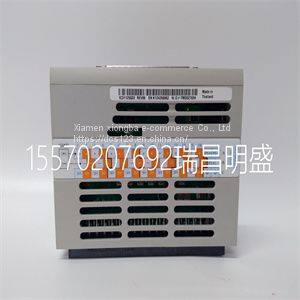
Module spare parts 1C31125G02
Product Details
Product Details
Product Description
Product DescriptionFocus on DCS, PLC, robot control system and large servo system.
Main products: various modules / cards, controllers, touch screens, servo drivers.
Advantages: supply of imported original products, professional production parts,
Fast delivery, accurate delivery time,
The main brands include ABB Bailey, Ge / fuanc, Foxboro, Invensys Triconex, Bently, A-B Rockwell, Emerson, ovation, Motorola, xyvom, Honeywell, Rexroth, KUKA, Ni, Deif, Yokogawa, Woodward, Ryan, Schneider, Yaskawa, Moog, prosoft and other brands
| 1C31125G02 |
>> Advanced Water Quality Testing Instrument for Accurate Results
>> Student dormitory balcony clothes rack multi purpose clothes hanger in kindergarten
>> Fine Art Print of Children/School Students Drawing Painting
>> Factory Price Movable Hammer Mill Machine Pharma Standard for Materials Crushing with Touch Screen
>> Modern Minimalist Style LED Wall Reading Lamp for Hotel Home Villa (2210)
>> Steel Foundry Casting Equipment Sand Mixer Furan Phenolic Resin Sand Mixing Machine Factory
>> Optical Variable Pigments C620p Optical Color Travel Effects Security Inks Printing on Screen Flexo Embossing and Gravure Optical Color-Changing Inks Coating
>> Low Rpm High Efficiency 500kw Biomass Gas Biogas Power Generator
>> Space Sand Kneading Equipment Playdough Kneading Machine
>> MAICTOP car exterior accessories front grille for Hilux revo rocco black and silver front grille
>> Plastic Recycling Machine/PP PE Film Recycling Washing Line
>> American Standards Four Panels Triple Tempered Glass Patio Door Glass Walls Sliding Door
>> Automotive Parts Brand New 5 Series F10 F07 LCI Engine Coolant Thermostat 7638681
>> Custom Steel Hardening Full Auto Steel Metal Block Aviation Automotive Lathe Parts Cnc Machining Service
>> 2024 New Creative Multifunction Quiet USB Rechargeable Handheld Fan Portable Pocket Hand-Held Foldable Mini Fan
>> 600W Economically Stable and Practical ATX Power Supply White Style for Gaming Computer PC Desktop
>> High-Quality Paper Bag Production Machine at Low Prices
>> Genuine Body Parts Carbon Fiber Interior Decoration For BMW 3 Series F30 Black Central Control Interior
>> S67 Helical Gear Speed Reducer Gearboxes Unit
>> 3-in-1 Automatic Fresh Orange Fruit Juice Plastic Bottle Rinsing Filling Capping Machine
>> Flow Adjustable Bathroom Accessory Taps Spray Gun Toilet Hand sprayer Shattaf Bidet Spray Toilet Hand Shower
>> VT1050 Timing Gear for Nissan 1.8 2.0 2007-2012 OE 13025CK80A Camshaft Adjuster
>> Aerosol Can Components Cone & Dome/Top & Bottom for Tinplate Can
>> [Glorystar] CNC Hydraulic Stainless Steel Bending Machine
>> Rebar Locator, Finder Detector /Rebar Corrosion Tester ZBL-C310A
>> Slab Formwork with Drop Head for Concrete Construction
>> E-Smile Blue Electrical Kettle for Milk, Honey, Tea, Coffee
>> ce&iso medical plastic disposable plastic urine leg bag medical grade 750ml urine leg bags with strips
>> Radeon Gaming Oc Gddr6 16GB Memory Rx 6800xt Graphics Cards 6800xt
>> Die Creasing or Die Cutting Machine for Paper Sheets (ML-750)